 I have dozens of cameras in my collection. Some are simple point-and-shoot models, there’s a slew of fixed-lens rangefinders, a few medium-format folders and TLRs, a couple of half-frame oldies in the mix, and I have several complete 35mm SLR systems. Yet all this gear has one thing in common: I’ve been able to learn a great deal about it on the internet with a quick Google search. Indeed, these days, it’s rare to find a camera that doesn’t have devoted following and its own Flickr group. However, I recently acquired a Yashica 35MF — a camera that seems to be virtually unknown.
I have dozens of cameras in my collection. Some are simple point-and-shoot models, there’s a slew of fixed-lens rangefinders, a few medium-format folders and TLRs, a couple of half-frame oldies in the mix, and I have several complete 35mm SLR systems. Yet all this gear has one thing in common: I’ve been able to learn a great deal about it on the internet with a quick Google search. Indeed, these days, it’s rare to find a camera that doesn’t have devoted following and its own Flickr group. However, I recently acquired a Yashica 35MF — a camera that seems to be virtually unknown.
Once I got the Yashica home from the thrift store where I’d purchased it, I did some on-line research but largely came up empty handed. One Japanese site notes the 35MF was released in 1976 as a successor to the much-loved Electro series, though it seems to have very little in common with that model. The 35MF is a fixed lens, fully automatic, scale-focus camera with a built in pop-up flash. A needle inside the viewfinder displays the aperture setting (ranging from f/2.8 to f/16), but does not indicated the shutter speed. To learn more about it, I had to plunk down a few dollars (more than I paid for the camera itself) on an instruction booklet from KEH.
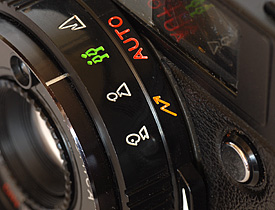
The 35MF is strictly a zone-focus camera. (Distances are also given in feet and meters on a separate scale, as shown in the picture below.)

The camera's rewind crank os located on the underside, along with the battery door for the AAs that power the flash, and a tripod socket.
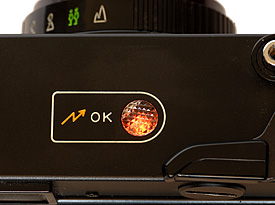
A light on the top of the camera and inside the viewfinder indicate when the flash is charged and ready to fire.
The manual cleared up a couple of specs, about which information on the web was absent, vague, or contradictory. The 35MF’s shutter runs from 1/60 to 1/250 second, yielding a 7-stop range. The meter requires a 1.35 volt mercury cell, though in my testing I found a regular 1.5 volt battery works just fine. (Some cameras seem more sensitive to voltage variations than others, and this particular Yashica appears to be very tolerant.) Certainly if you’re shooting print film, there’s little to worry about. The camera’s 38mm lens focuses from 1 meter (3.2 feet) to infinity. And in spite of what I read on the internet, it’s not a rangefinder — it’s zone focus all the way on this one. Finally, the ASA dial allows settings from 25 to 500, which is reasonable given the camera’s shutter speeds and aperture range.
If the specifications make this sound like a pretty unremarkable camera, that’s because on paper it largely is. However, there are three features that make the 35MF a favourite. First, and most importantly, its 38mm f/2.8, 4-element lens is remarkably good. The photos I’ve taken with the camera have been sharp with minimal vignetting. Second, as simple as the CdS exposure system is, it seems to work well. I haven’t shot slide film with this camera yet, but so far all the negatives have come out well exposed. Third, I really like how the 35MF feels in the hand. Some of that results from its 490-gram (16-ounce) heft, which partly comes from the pair of AA batteries used to power its internal flash. Speaking of which . . .
The flash is actually quite useful, if not tremendously powerful. With ISO 100 film, its effective range is only 1.5 meters (5 feet), but that’s fine for snapshots of pets and friends. The aperture automatically adjusts for the correct flash exposure based on the focus-distance setting. More importantly though is that the flash works for daylight fill, which I use quite often. Oddly, activating the flash requires two hands — one to push in the “pop-up release” (the silver button on the front of the camera), the other to rotate the pop-up lever, located on a ring at the base of the lens. This is awkward and seems unnecessarily complicated — as though the camera’s designers felt it would be catastrophic if you accidently fired the flash without meaning to. With fresh batteries, the flash is ready to go in a second or two, while its state of charge is indicated in the viewfinder and by the orange “OK” light on the top of the camera.
To be completely honest, I bought the 35MF mostly because I liked the way it looks. There’s a certain Leicaesque je ne sais quoi about it that I find appealing. The rewind crank is located on the underside of the camera, which helps give the top plate a nice, uncluttered appearance. While I wouldn’t necessarily recommend one as your only camera, it is a capable machine that works nicely for street photography and snapshots. It’s both quick and easy to use (notwithstanding the flash) — and I can think of lots of cameras that aren’t. If you don’t mind its largely automatic operation, you can get a lot of good photography done with it. And there’s no denying that the 35MF will help you stand apart from the rest of the Yashica crowd, all reflexively clutching their Electros. Which reminds me, I must give my Electro a Favourite Camera write up soon . . .

The tower at Tower Point, Victoria, BC.
(Camera: Yashica 35MF; Film: Kodak T-Max 100; Filter: yellow)

Sunset at Witty's Lagoon, Victoria, BC.
(Camera: Yashica 35MF; Film: Kodak T-Max 100; Filter: yellow)
Did you find this article interesting or helpful? If so, consider using this link the next time you shop at Amazon.com. Better yet, bookmark it for future use. Thanks to Amazon’s associates program, doing so costs you nothing yet helps keep this site up and running. Thanks!
For more of my camera reviews, click here.



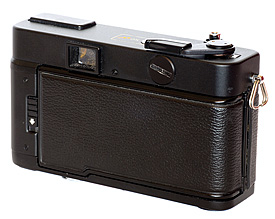
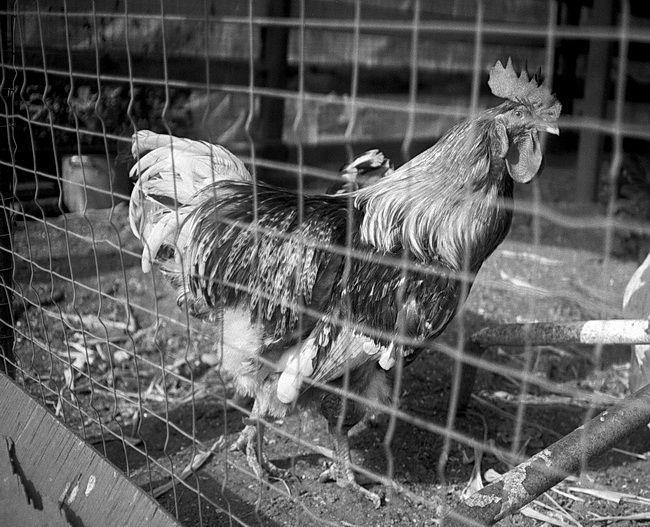
 Subscribe with RSS
Subscribe with RSS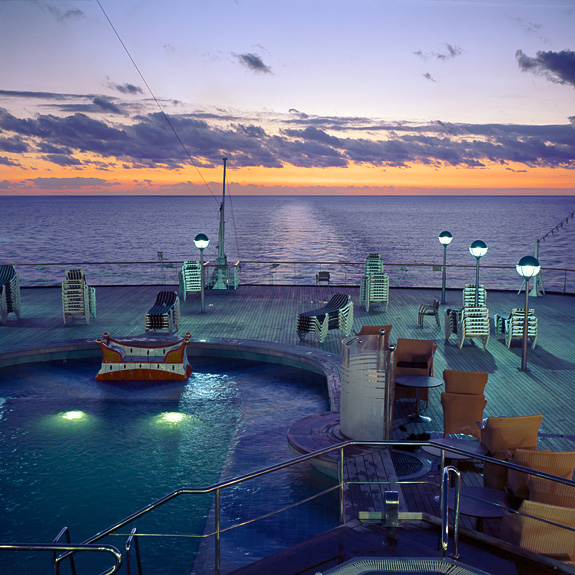
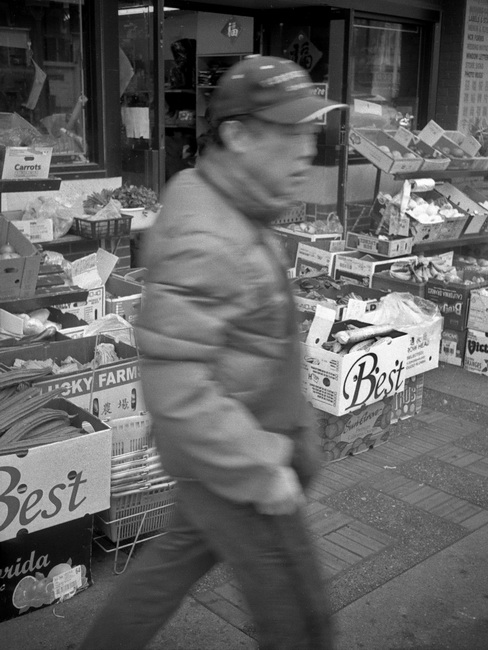
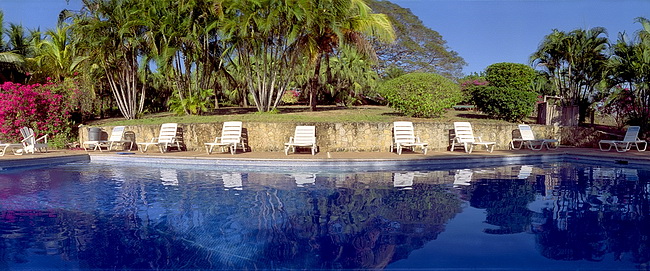
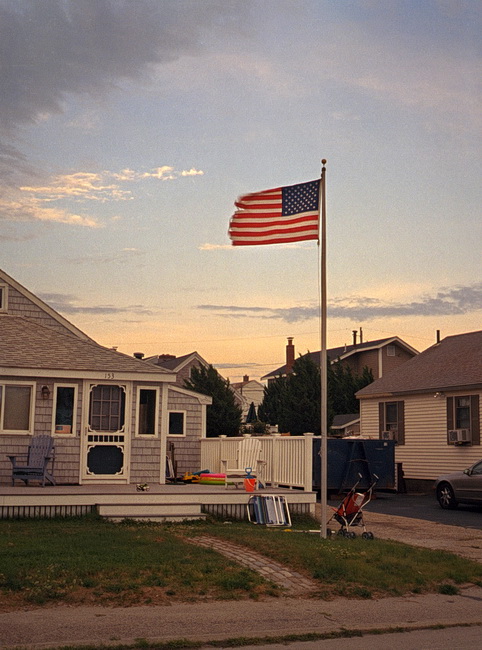
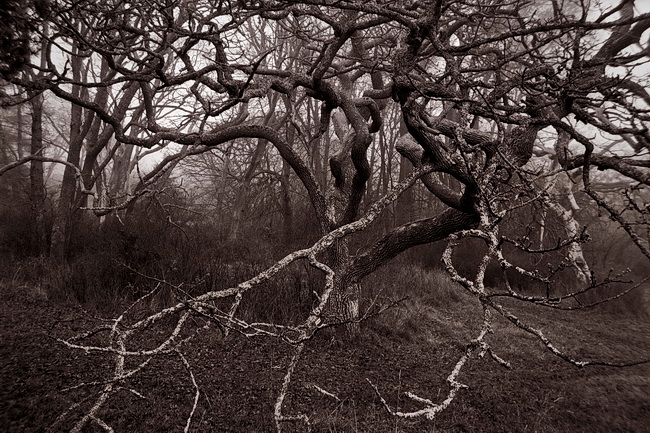
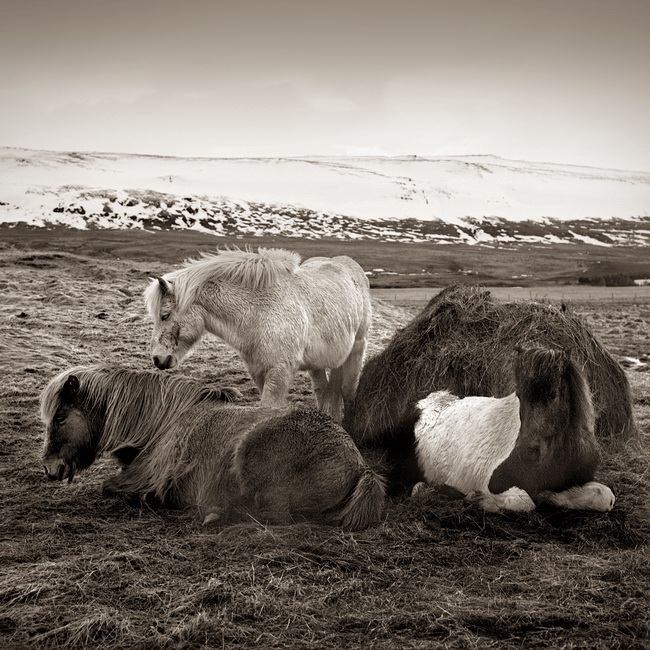
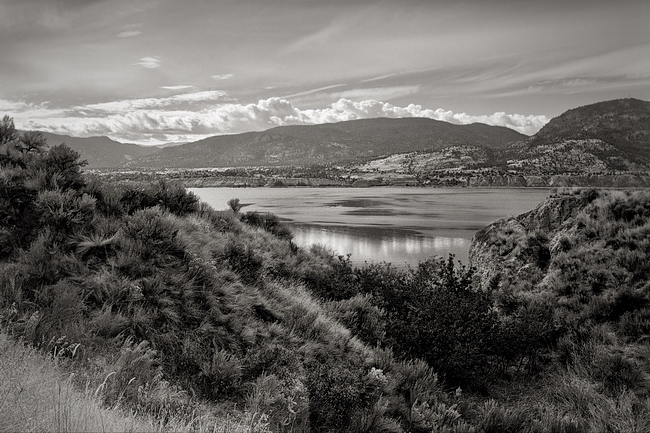
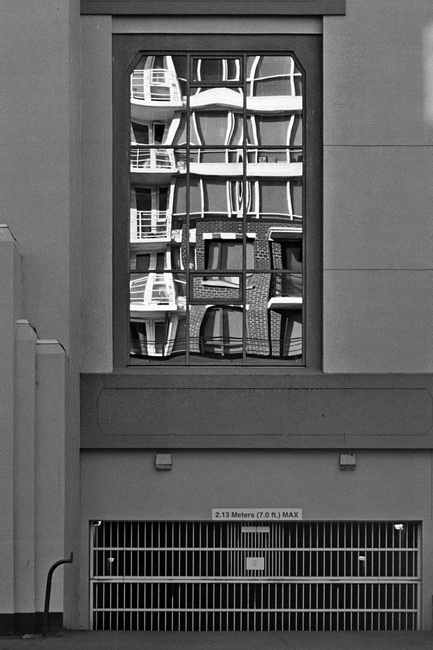
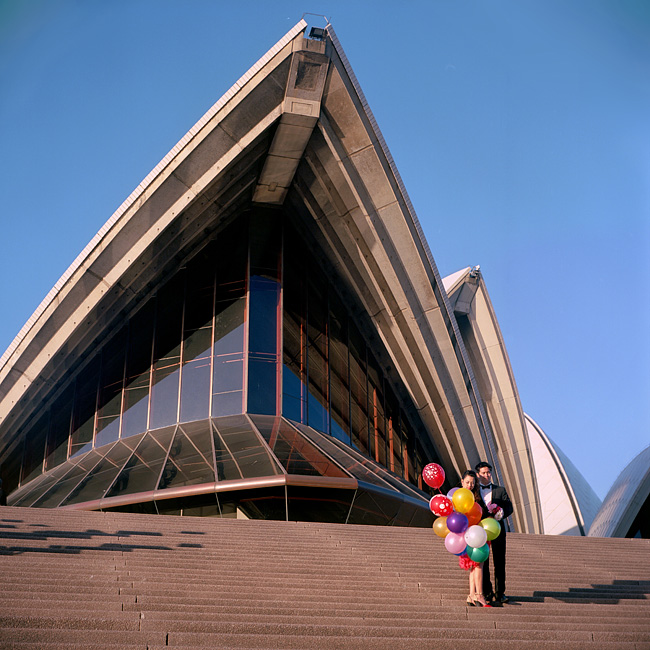
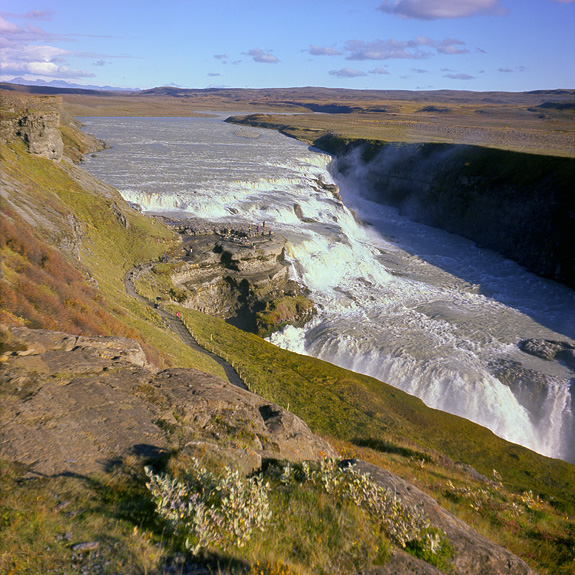
Hi,
Im a new fan of the Electro Series. I Just got myself a GSN. I really like the pics you’ve put of the MF. I wasnt even aware this camera existed.
What are the Zone distances for the camera’s Focus system? Just out of curiousity.
Hi Daniel:
Focus zones are the usual 1m, 1.5m, 3m and infinity. Because the focal length of the lens is 38mm, you don’t have to be dead on.
Interesting camera you have there! I think zone focus cameras are perfect for street shooting. You don’t have to fiidle with the rangefinder at the last moment and it’s much easier to shoot with the camera hanging from your neck in tricky situations when you want other people to be unaware of you taking their photo. Since the Electro series came up, my favorite one is the humble 35MC which is a great street shooter with zone focusing. It has all the advantages of the electromagnetic shutter and the perfect exposure system of its rangefinder siblings packed in a tiny body with a very sharp 2.8/40 lens directly rivaling the Rollei 35 (esp if you’re on a budget and don’t care about the hype factor). Yashica also produced the ME-1, another zone focusing sharp shooter made in Brazil (!) in the 70s. I also have great affection for the legendary Trip 35, the humble (but very sharp) Minolta Himatic G and the Ricoh 35 ZF, all zone focusers, all sporting great lenses, all being dirt cheap in the shadow of their rangefinder siblings.
Thanks Christos — some interesting comentary there. Your 35MC looks similar to another camera I have a great fondness for, the Konica C35 Automatic, which is also a fine street shooter, albeit with rangefinder focusing.
The Konica C35V (zone focusing variant) is much closer, although the Yashica 35MC is aperture priority semi-auto and not fully automatic like the C35 Automatic. I don’t think the Yashica Electro series had any direct rivals, as I’m totally unaware of a non-SLR aperture priority camera from the 60s-70s…
I’ve just recently purchased this camera, and like you said, found very little information on it–this has been the most useful, and I thank you for that. However, I was wondering how do you change the asa? I can’t seem to find the right dial.
The ISO/ASA is changed by rotating the ridged, plastic bezel surrounding the glass of the lens. (I hope that makes sense!)
Just got my Yashica 35MF in the mail yesterday. You say the meter needs a battery, but I can’t find the compartment for it. Where in the camera is it?
The battery compartment is to the right of the viewfinder, directly below the film advance lever — it’s one of those that needs a coin to open
Thanks so much, man. Found it, and realized I need to replace the 1.5v battery it shipped with. I’ve got my first roll of film in it, and the advance lever tends to catch a bit when I advance to the next frame. Is that a sign that something might be amiss? Or is it just age?
Hard to say from here. How confident are you that you loaded the film correctly? Just make sure that you’re not planning to photograph anything critical. It’s always a good idea to regard the first roll through an untried camera as a test roll.
Found one of these at a thrift store, clearly it’s
A landscape camera as the photo’s I’ve taken of
People make them appear fatter/wider than they
Really are and close ups are distorted. Even when stopped
Down and on a tripod.
Hence, was why it was at a thrift store for a few bucks.
Hi Bill:
I haven’t noticed this effect in any of my photos as yet. The lens is 38mm, so it’s sort of a wide-normal, which I suppose could lead to the “fatter/wider” effect you describe if you get close enough, but given the near-focus distance is 1 meter, I wouldn’t expect to see it too often.
First of all, cuz I am not a fluent English speaker. So there could be awkward expressions in sentences. Anyway I have my own 35mf and yet to be advanced. It is my first time to use film camera, so its hard for me to expect how the outcome will be. BTW, I have a question regards to ‘zone focus’. Roughly understood by the marks of human and mountain that those means distance. But I cannot estimate the actual distance of a first mark(face like).
And could u give me an advice about the focus in a square box?
Most of all, YOUR posting is the best that explained about this camera. Thank you SO MUCH.
Hi Alice:
Glad you found the review helpful. As for focus distances, if you look on the lens barrel, opposite the distance symbols, you’ll find another focusing scale, this time marked off in meters and feet. That’s what it sounds like you’re looking for.
Looking for a camera to sometimes get away from my heavy DSLR kit for returning to the basics once in a while and feel somewhat drawn to this one. Just one question to which I find no answer online. What filter thread does it have?
46mm
This looks very similar to the Konica C35 EF, which I have and also love for its look, feel and simplicity of use, not to mention the exposures are spot on and the photos it takes are sharp and clear. This camera does look a tad bit nicer though.
I have the same camera and for the life of me I can’t figure out how to turn on the viewfinder meter. I got a brand new battery in there as well.
The meter on all the time — there’s nothing to do to “turn it on.” Either your battery is dead, in the wrong way, or the camera is broken.
I bough the exact same camera on a market for 50 cents. Your article has been extremely helpful for me. I originally was appealed to the looks of the camera, and just seconds later while hearing the cost, I purchased it. I bought it with an old (to worn out to use) franka mid format camera for the ridiculous price of 1 euro.
I have to admit to sometime being to lazy to start carrying full reflex camera’s around, so this camera makes it possible for me to always shoot.
I first minded that it’s an full automatic, but in the end it’s the perfect snapshot camera, and I believe this is a good way to focus on the in tell of a picture more then only the correct settings.
Nice review!
Thanks a lot!
Hi, thanks for the great article!
It helped a lot.
I’m starting analog photography and mainly/only B/W.
Bought this camera a few weeks ago, already shot and developed a roll af film,not bad.
One question regarding my camera: the flash loads(high pitch sound) light turns orange, bur will not flash. Any thoughts about this?
Greetings from Holland,
Marcel Smits
Hi Marcel — it sounds like the flash element is burnt out. Perhaps someone else has a suggestion.
I just bought a Yashica 35MF yesterday at a local thrift for $6.95 with the case. I cleaned it up, put in the batteries, and wow, everything works! Here’s a photo of it [img]https://c1.staticflickr.com/9/8828/18096871730_763f057ddc_z.jpg[/img]
Thanks for your research on this little known camera. And yes, it does have a certain Leica je ne sais quoi. I can’t wait to shoot a roll through it. Cheers.
Hello there, thanks for the review. I just found my dads Yashica 35mf, and had no luck finding a manual. I had a question or 2, and I don’t know too much about older cameras so please bare with me. With all the batteries in(no film), how can you tell if the camera is on/working?
Hi Alex:
Keep in mind that you need a set of AA batteries for the flash and a second, small battery for the camera’s functions. You can check to see if it’s working by aiming it a bright light and checking the aperture (by looking at the lens), then aiming it at a dim light and see if the aperture opens wider when you fire off a shot.
Gary
Yeah I got the 1.5 v battery the other day. Again, I’m not the brightest when it comes to cameras, especially older ones. But this one is in perfect looking condition, and has all the parts so I figured I’d try. I aimed it at a bright light and didn’t really notice anything. I aimed it at a dim light, took a shot and only noticed the shutter lens open and close fast.
Is the meter in the viewfinder doing anything? Does it seem to respond to changes in lighting?
The meter in the viewfinder seems fine. The dial will go up when I point the camera towards a bright light, and then go down as it gets away from the bright light.
The next step then is to run some film through it. Good luck!
Just found one of these at a thrift shop, love the look and feel. Any idea how this thing operates without a battery? I remember the electro shutter would lock at 500 without a battery.. once I got used to adjusting aperture without the light meter I was happy as hell with the thing..
wondering if I can get away with that on this little guy
Whats the deafult shutter without a working meter if it has one
Hi Sean:
Your guess is as good as mine — the manual doesn’t say. However, the shutter speed ranges between 1/60 to 1/250.
I have a roll of hp5 in it at the moment, should be fun to get some portraits with flash. Anyone had experiance with this camera and portraits
I just got one of these and put a test roll in it. The issue I had was that the rewind knob/lever turned once when I was loading the film but not after that. I took about 2o or so shots not knowing if the film was advancing. Finally I rewound the film and judging from the tension, it had actually advanced. Has anyone else had this problem?
I shot another roll and again, the rewind knob advanced once while loading the film but not after that. This time I just trusted that the film was advancing and kept shooting. Sure enough, after 37 shots I couldn’t advance any further.
I got the film back and I agree with Gary’s assessment; the lens and metering are really nice. The Yashica 35 MF reminds me a lot of the Canon A35F, which also has auto-exposure and a built in flash. The main difference is that the Canon has a 40mm lens as opposed to a 38mm and has a rangefinder.
I wish the rewind knob turned when advancing the film but overall this camera is definitely a keeper.
Hi Gary! Very useful article. I’ve recently purchased a Yashica 35MF and my mind has gone blank when it comes to photography now (it’s been a few years!).
I remember the basics, but I wanted to ask if you had any suggestions as to where to get a battery (what type etc) and where to get film from?
Thanks and sorry for the dumb questions.
Hi Tayler:
It all depends on where you live. Usually you can still get film locally, but if not, one of the big New York shops (B&H or Adorama) is great for mail order.
Gary
Hi, Gary. Your article is so helpful to me. By the way, when the flash has poped up, and if I press the button then it flashes automatically, right?
If dont, it means flash is not working, does it?
Mine charges the flash and it gets red light but when I press the button, it doesnt flash….
That does sound like something’s not working–perhaps the flash element itself is defective/burnt out or the wires connecting it are broken. But your understanding of what *should* happen is correct.
Gary
Hi Gary, I just got a 35 mf and I will try my first roll on her (Negrita is her name) lol and while I loaded the film and advance to get to the first frame I noticed that the rewind knob doesn’t move, I tried to go clockwise to put some tension and to b sure and it is right. I read in somewhere that someone had the same situation, is that normal or is just my camera?
Thank u sooooo much for putting this together, ur site is the only place to find info about this little camera, hope to hear from u soon.
Alex
Hi Alex:
As far as I can remember, it should be possible to “take up the slack” by gently turning the rewind control counterclockwise. Once you have, the rewind should rotate clockwise when you advance the film. This is a good way to check that the film has been wound on properly.
Gary
Hey! Thanks for the article. It’s been very helpful.
I have a question about the battery. I didn’t know what size it had to be so I went with a 357, 1.5v silver oxide battery. However, the meter is not working. What kind of battery did you use? I’m thinking of trying an A76 next.
Thanks!
Thank you for this information. I’d forgotten I had the MF and when I unearthed it recently couldn’t remember how to use it. Especially useful was activating the flash. I was defeated until I read this. Unfortunately, the AA battery compartment lid broke and I have it taped on .
Frustrating that no manual was available on line. I think you have given me all the info I need Thank you so much.
Dear Gary, that’s an amazing review. That’s one rare source of information for the mf-3 camera.
thanks also to all the other readers for comentary.
Hi
I just found this camera my mom got it from my Opa tbh I got no idea what anything you said means. Just wondering what kind of film you’d recommend for it? Don’t know if anyone will respond after 6 years but oh well.
Pretty much any 35mm film should work fine if the camera is in good working order. If it’s been sitting unused for a long time though, it’s probably the case that the shutter will be a bit sluggish, so test it out without film first.
Great review. I’ve recently bought a “not used for a long time” 35 MF. The light seals have deteriorated. Are there any bespoke pre-cut replacement light seals out there or will I have to cut them myself from a “universal” kit?
Hi. The button battery for the camera was a 1.3v mercury type which is now no longer available. Whats the replacement that people are using please? I’d read that the alternative 1.5v button batteries aren’t compatible. Thanks.